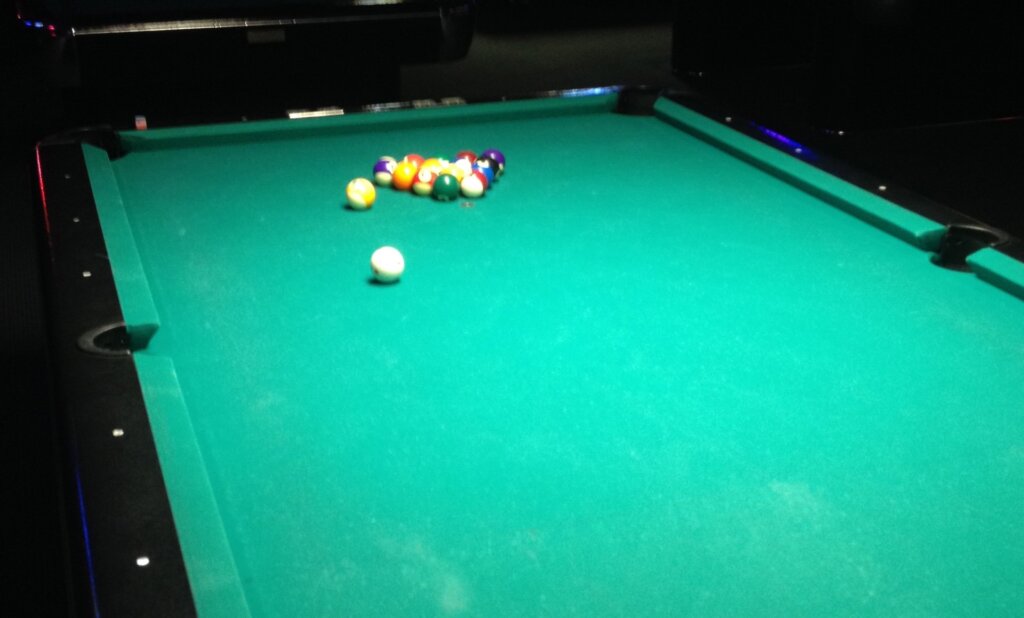Delve into the intricate and thrilling world of Straight Pool, a popular and fascinating cue sport. Understanding the rules of Straight Pool can turn a simple game into a thrilling tactical battle, unlocking countless possibilities on the table. Read on for a comprehensive guide on Straight Pool rules and how to implement clever strategies for an engaging game.
Understanding the Basics of Straight Pool
Straight Pool, also known as 14.1 Continuous Pool, is a game that is steeped in history. Unlike other pool games with set numbers of games or racks, the objective of Straight Pool is to be the first to reach a predetermined number of points, typically 100 in professional games.
This game can be played on any standard pool table and requires a standard set of 15 object balls and a cue ball.
The Initial Setup
For the initial rack, all 15 object balls are racked in a pyramid, with the apex ball placed on the foot spot. The first player is usually determined by a lag shot, with the player whose ball ends up closest to the head of the table winning the right to break.
Gameplay Rules

The rules of Straight Pool are relatively straightforward, yet allow for strategic depth. Players earn one point for each ball they legally pocket. However, unlike in other pool games, all pocketed balls remain pocketed, and the balls are re-racked whenever only one object ball remains on the table.
Calling shots is an integral part of the game. This means that the player must announce which ball they will pocket and in which pocket. If a player pockets a ball without calling it, or pockets the called ball in a different pocket, it counts as a foul.
Re-racking occurs when only one object ball remains on the table, which is then combined with the 14 previously pocketed balls to form a new rack. The only exception is that the apex ball is left off to allow room for the “break” shot.
Foul and Penalty Rules
In Straight Pool, several actions can lead to fouls, such as failing to hit any ball, pocketing the cue ball, or shooting a ball off the table. Each foul results in a penalty of one point.
If a player commits three fouls in a row in a single inning, they receive an additional penalty of 15 points, and their inning ends.
Advanced Strategies for Straight Pool
To excel in Straight Pool, you need more than just a grasp of the basic rules. Implementing advanced strategies can dramatically enhance your game, adding layers of complexity and intrigue.
Break Shot Strategies
Break shots are crucial in Straight Pool. A well-executed break shot can lead to scoring runs, where a player can pocket numerous balls in a single inning. To optimize your break shot:
Ball Selection: Look for a ball close to the rack that can be easily pocketed, while enabling the cue ball to make a solid impact with the rack.
Cue Ball Control: Try to position the cue ball in a way that it strikes the rack and then settles in the center of the table. This offers the most shot options for the next turn.
Power vs Precision: Break shots require a balance between power (to spread the balls) and precision (to control the cue ball). Too much power and you may lose control of the cue ball; too little and the balls won’t spread enough to offer viable shots.
Position Play Strategies
Position play in Straight Pool involves planning several shots ahead and positioning the cue ball after each shot to facilitate the next. Here are some strategies:
Leave the “Key Ball”: This is the ball you plan to pocket before the break shot. It should be left in a position that makes it easy to pocket and then transition to the break shot.
Clear Paths: Try to clear paths to the pocket for clustered balls. This involves strategically pocketing balls to create clear shots for those that are currently blocked.
Cue Ball Control: Using follow, draw, and side spin can drastically improve your ability to position the cue ball for the next shot.
Defensive Play Strategies
Sometimes, a strong defense is your best offense. Here’s how to use defensive play to your advantage:
Safety Play: If there’s no beneficial shot available, you might want to consider a safety shot. This could involve sending the cue ball to the other end of the table, away from the object balls, making the next shot for your opponent difficult.
Snookering: This involves placing the cue ball in such a position that your opponent can’t make a direct shot at their desired object ball. They’ll need to bounce off a cushion, making their shot more challenging.
Disturbing the Rack: In some cases, you might choose to disrupt your opponent’s planned break shot by knocking the intended break ball or key ball into a less advantageous position.
These advanced strategies, when mastered, can offer you a significant edge in Straight Pool. Remember, these techniques require practice to perfect, so be patient with yourself and keep refining your game.
Straight Pool video
This video from Niels The Terminator Feijen on how to play straight pool is great. Over an hour’s worth of great tips from a master of the game. Go take a look.
Conclusion
Straight Pool offers a unique blend of strategy and skill that is unmatched in the world of cue sports. Understanding the rules of Straight Pool is your first step to mastering this exciting game.
So, grab a cue, chalk up, and embrace the challenge that is Straight Pool. Your journey to becoming a true Straight Pool expert begins here. Remember, the more you practice, the better you’ll get, and the more fun you’ll have!


